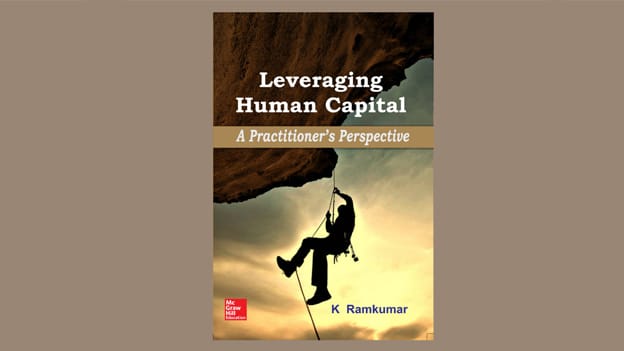Book Review – Leveraging Human Capital by K Ramkumar

K. Ramkumar is known for his incisive commentary on the corporate world. He is, in his own words - “never one to back off from an eyeball to eyeball” especially when people were being taken advantage of. Over a career spanning 32 years, he has held a number of positions across some of the leading organizations in the country and one got a glimpse of his mind on a whole range of topics through his blog www.theotherview.in. His recent book “Leveraging Human Capital: A Practitioner’s Perspective” is an addition to that exercise. The book is addressed to not only the HR specialist but to anyone involved “with the business of leveraging human capital to create value”.
The book begins by exploring the history of the business of managing people in the modern world. And it is told through the story of the strike in 1892 at the iconic Andrew Carnegie steel plant. By mapping the complex relationship between labor and capital, he sets a socio-economic context to understand how organizations have come to manage work and the people who are involved in them. It is at the end of chapter one that we’re given a definition to chew on – “Leveraging human capital is not about models, forms, policies, processes, and systems; it is more about creating an environment where human beings voluntarily deploy their best, day after day”. With this in mind, he takes the reader through a number of topical subjects including motivation, capability, learning, culture, performance and leadership. Throughout the book, he presents an incredible amount of scholarship – drawing from experts across disciplines in psychology, history, philosophy and business.
The most engaging aspects of the book lie in the real stories that animate the book. In the chapter on culture, Ramkumar elucidates as to how K.V. Kamath’s “young brigade” took on the challenge of bringing about a cultural change in the ICICI bank, which was until then managed like a public sector bank – both in terms of the service and outlook. When further acquisitions threatened to pull the bank down the unionized route, it was up to Kamath and his young team to bring about a transformative change in the organization. It is noteworthy that some of these members of the young brigade went on to take up leading positions in the financial services industry and they include the likes of Chanda Kocchar – MD and CEO of ICICI bank, Kalpana Morparia – CEO, J.P. Morgan India, and Shikha Sharma – MD and CEO, Axis Bank. While articulating the importance of nurturing talent, he paints moving portraits of Sanjeev Katpalia at Lipton and Kalpana Morparia at ICICI among others. In the chapter on leadership, he also shares his candid conversations with K.V. Kamath while assisting with the bank’s succession planning efforts to identify the next managing director and CEO.
Ramkumar calls out the HR function’s juvenile obsession with training and emphatically says “no one learns because someone else wants them to learn”
Throughout all the chapters, the author presents a framework to understand the issue at hand and he animates them with his own reflection to present contemporary challenges or to elucidate a point. In tracing the shift from the traditional discourse of human capital, Ramkumar reminds us that the new-skill rich employee is more potent and powerful than ever before. He also tells us that the link between motivation and performance differs for ‘deep specialists’ and for those in strategic leadership positions. And that building trust is central to the performance of individuals – the basic currency of which is manifested in equity and fairness in financial terms. He challenges HR professionals to think about the ‘decision-making process’ – why do people choose to act or to not act in a given situation. And he does not forget to note that he hasn’t come across ‘a single person’ who as mastered all human capabilities.
In the section on learning, Ramkumar calls out the HR function’s juvenile obsession with training and emphatically says “no one learns because someone else wants them to learn”. He notes that concepts don’t create learning but feedback, confrontation, and reflection do. It is on the same strand he situates nurturing – an exercise of faith that he believes is only borne out by leaders who enable people to discover themselves and give them opportunities to fail. He also points to subtle differences such as the differences between an individual’s performance as an individual and within a team. On leadership, he says that the idea that leadership is principled and situational is quite romantic. And he steers away from a deterministic outlook of the “success and failure” prism.
Overall, the book is easy to read and would equally appeal to the novice and the expert. While the bullet points break the flow of the text, the engaging stories make up for it.
- Book: Leveraging Human Capital: A Practitioner’s Perspective
- Publisher: McGraw-Hill Education
- Author: K. Ramkumar
- Pages: 257











